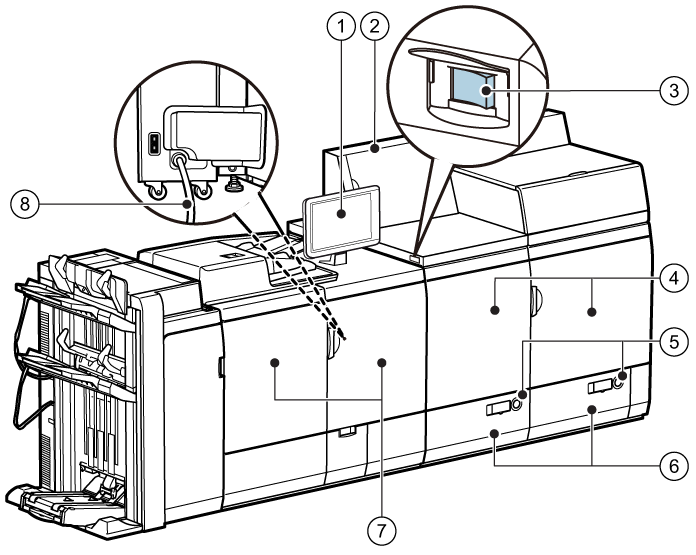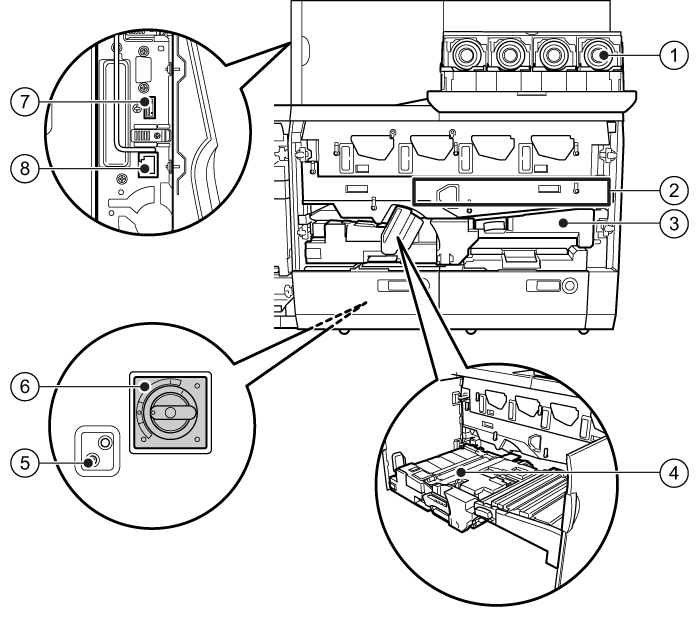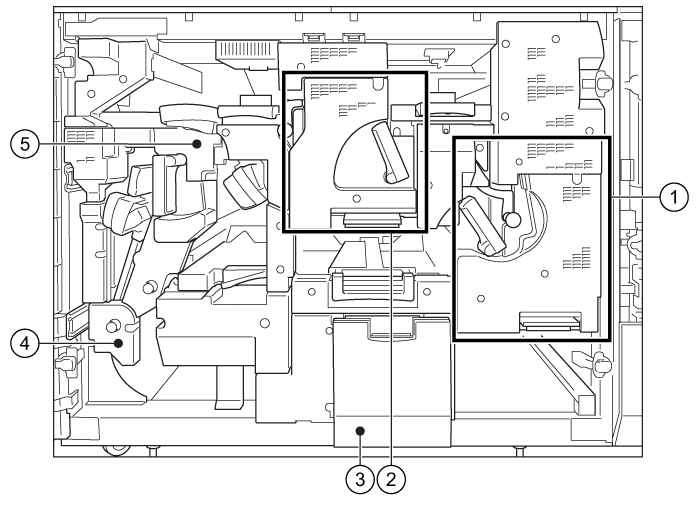

The print module had several ports and connectors to connect it to optionals and other equipment. Access the print module when a paper jam occurs or to do maintenance tasks.
 External view of the print module
External view of the print module|
Description print module |
|
|---|---|
|
1 |
Control panel, to operate the print system and to perform daily tasks and maintenance. |
|
2 |
Power supply unit, to provide power to the marking engine and fixing station. |
|
3 |
Main power switch, to turn on the print module. |
|
4 |
Marking engine covers, to access the paper path when a paper jam occurs. |
|
5 |
Buttons, to open the paper trays. |
|
6 |
Internal paper trays, to hold the media. |
|
7 |
Fixing station covers, to access the paper path when a paper jam occurs. |
|
8 |
Power cord, to supply the main power for the print module and automatic document feeder. |
 Internal view of the
Marking engine
Internal view of the
Marking engine |
Description marking engine |
|
|---|---|
|
1 |
Toner cartridges. |
|
2 |
Intermediate transfer belt, to access the paper path when a paper jam occurs. |
|
3 |
Feeding unit, to access the paper path when a paper jam occurs. |
|
4 |
Skew correction roller, to access the paper path when a paper jam occurs. |
|
5 |
Button, to test the circuit breaker. |
|
6 |
Circuit breaker, to detect an excess current or a leakage current. You access the circuit breaker via the rear side of the print module. |
|
7 |
LAN port, to connect the print module to the print server. |
|
8 |
Data ports, to connect the print module to the print server. |
 Internal view of the
Fixing station
Internal view of the
Fixing station |
Description fixing station |
|
|---|---|
|
1 |
Primary fixing unit, to access the paper path when a paper jam occurs. |
|
2 |
Secondary fixing unit, to access the paper path when a paper jam occurs. |
|
3 |
Replaceable waste toner container, to collect wasted toner. |
|
4 |
Reverse unit, to access the paper path when a paper jam occurs. |
|
5 |
Decurler unit, to access the paper path when a paper jam occurs. |
The sensing unit automatically performs media registration and colour density adjustments during printing. This reduces registration errors and colour drift, maintaining high quality print results throughout your print jobs.
The sensing unit also automates existing calibration processes like the initial front-back registration, secondary transfer voltage and shading correction. The automatic printer calibrations reduce daily operator tasks and engine down time.